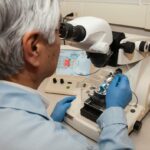Brief Overview of Darwin’s Theory of Evolution
Charles Darwin, a 19th-century naturalist, proposed a groundbreaking theory that revolutionized our understanding of the natural world. Darwin’s theory of evolution suggests that all species are related and gradually change over time through a process called natural selection. This theory, based on extensive scientific research and observation, provides a comprehensive explanation of life’s diversity on Earth.
The Importance of Understanding Darwin’s Theory
Understanding Darwin’s theory of evolution is crucial for several reasons. It provides a framework for interpreting the natural world, allowing us to understand why species are the way they are and how they have changed over time. Moreover, it has significant implications for fields such as medicine, agriculture, and conservation, making it a cornerstone of modern biology.
The First Strength: Evidence of Evolution
Fossil Records as Evidence
Fossil records provide compelling evidence supporting Darwin’s theory. Fossils, the preserved remains or traces of organisms from the past, offer a chronological record of evolution over millions of years. They show a clear progression of life forms, from simple to complex, consistent with Darwin’s theory.
Biogeography and Evolution
Biogeography, the study of the distribution of species and ecosystems in geographic space and through geological time, also supports Darwin’s theory. Certain patterns, such as the unique wildlife on remote islands, can only be explained by evolution and the migration of species over time.
Comparative Anatomy and Embryology
Comparative anatomy, the study of similarities and differences in the anatomy of different species, provides further evidence of evolution. Many species share similar structures (homologous structures) with different functions, suggesting a common ancestor. Similarly, embryology, the study of embryos, reveals that many different species go through similar developmental stages, indicating a common ancestry.
Molecular Biology: DNA and Protein Structures
Finally, molecular biology, particularly the study of DNA and protein structures, provides some of the strongest evidence for Darwin’s theory. All living organisms share the same basic genetic material (DNA), further suggesting a common ancestor.
The Second Strength: A Mechanism for Evolution
Understanding Natural Selection
Darwin’s theory provides not just evidence for evolution, but also a mechanism: natural selection. This process involves variations in traits, competition for resources, and the survival and reproduction of the fittest individuals.
Survival of the Fittest: An Explanation
“Survival of the fittest” is a phrase often associated with Darwin’s theory. It means that individuals best adapted to their environment are more likely to survive and reproduce, passing on their advantageous traits to the next generation.
Natural Selection and Genetic Variation
Natural selection relies on genetic variation within a population. The more varied the genetic makeup of a population, the greater the chance that some individuals will possess traits beneficial for survival and reproduction.
The Role of Mutation in Evolution
Mutation, a change in an organism’s DNA, is a primary source of genetic variation and a key component of evolution. Mutations can introduce new traits into a population, some of which may be advantageous and become more common through natural selection.
The Third Strength: The Recognition that Variation is Important
The Concept of Variation in Darwin’s Theory
Darwin recognized the importance of variation in evolution. Without variation, there would be no basis for natural selection to act upon.
Genetic Variation: The Key to Evolution
Genetic variation is the foundation of evolution. It results from mutations and the recombination of genes during sexual reproduction. This variation gives rise to the diverse traits we see in populations and species.
Environmental Influence on Variation
The environment plays a significant role in shaping variation. It can influence which traits are advantageous and thus more likely to be passed on to the next generation.
The Impact of Variation on Species Survival
Variation can impact species survival in several ways. It can enable a species to adapt to changes in its environment, increase its chances of survival during catastrophic events, and facilitate its colonization of new habitats.
Criticisms and Counterarguments
Common Criticisms of Darwin’s Theory
Despite the overwhelming evidence, Darwin’s theory has faced criticisms. Some argue that it cannot explain certain complex biological structures, while others question the lack of transitional forms in the fossil record.
Scientific Responses to these Criticisms
Scientists have addressed these criticisms through further research and evidence. For example, many “complex” structures can be explained by evolution when their history and function are properly understood. Additionally, numerous transitional fossils have been discovered, filling in the gaps in the fossil record.
The Relevance of Darwin’s Theory Today
Modern Applications of Darwin’s Theory
Darwin’s theory remains relevant today. It is applied in fields such as medicine, where understanding of evolution can help combat diseases, and conservation, where it can guide efforts to preserve biodiversity.
Evolutionary Theory in Modern Biology and Medicine
In modern biology and medicine, Darwin’s theory provides a framework for understanding the relationships between different species and the mechanisms of diseases. It also informs the development of new treatments and prevention strategies.
In conclusion
Recap of the Three Major Strengths
In conclusion, the three major strengths of Darwin’s theory of evolution are the extensive evidence supporting it, the mechanism it provides for how evolution occurs, and its recognition of the importance of variation.
The Lasting Impact of Darwin’s Theory on Science
Darwin’s theory has had a profound impact on science. It has shaped our understanding of the natural world and continues to guide scientific research and applications today.
References
- Darwin, C. (1859). On the Origin of Species by Means of Natural Selection, or the Preservation of Favoured Races in the Struggle for Life. London: John Murray.
- Futuyma, D. J. (2013). Evolution. Sunderland, MSinauer Associates.
- Mayr, E. (2001). What Evolution Is. New York: Basic Books.








